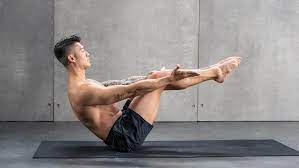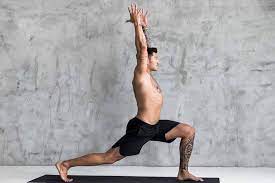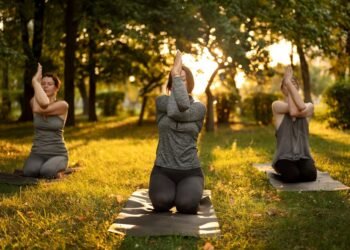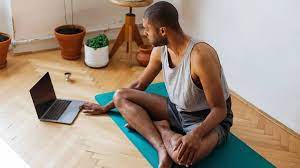Yoga is an ancient practice that has been gaining popularity worldwide. It is a form of exercise that not only helps in improving physical health but also promotes mental and emotional wellbeing. The benefits of yoga are numerous, but the key to getting the most out of this practice is by performing the yoga poses correctly.
Correct alignment is crucial to get the maximum benefit out of any yoga pose. Alignment refers to the position of various body parts during a particular yoga pose. When the body is aligned correctly, it enables the muscles to work efficiently, reduces the risk of injury and improves overall posture. Proper alignment is essential to get the most benefit out of your yoga practice, regardless of your level of experience.

In this article, we will explore some simple ways to improve your yoga poses through alignment.
-
Start with the Basics
Before diving into advanced yoga poses, it’s essential to start with the basics. Basic poses such as downward-facing dog, warrior 1 and 2, and mountain pose can be practiced regularly to improve your alignment. These poses will help to improve your posture, strengthen your muscles, and prepare your body for more advanced poses.
-
Pay Attention to Your Feet
Your feet are the foundation of your body, and correct alignment of the feet is crucial for a stable yoga practice. Always place your feet hip-distance apart and make sure that your weight is evenly distributed between both feet. In standing poses, such as warrior 1 and 2, make sure that your front foot is pointing straight ahead, and your back foot is at a 45-degree angle. Engage your toes and lift your arches to ensure that your feet are active and not collapsing. Proper alignment of your feet will help to improve your balance and stability during your yoga practice.
-
Engage Your Core
The core muscles are responsible for stabilizing the body during yoga poses. Engaging your core will help to prevent injury and improve your overall posture. In standing poses, such as tree pose, engage your core by drawing your navel towards your spine. In plank pose, engage your core by contracting your abs and pulling your shoulders away from your ears. Always remember to breathe deeply while engaging your core muscles to avoid holding your breath.
-
Align Your Hips
Alignment of the hips is essential for stability and balance in yoga poses. In standing poses, such as warrior 1 and 2, ensure that your hips are facing forward. In seated poses, such as pigeon pose, make sure that your hips are square and not tilted to one side. Aligning your hips will help to reduce the risk of injury and improve your overall posture.
-
Keep Your Shoulders Down and Back
During yoga poses, it’s common to hunch your shoulders up towards your ears, especially when holding a pose for an extended period. This can cause tension in the neck and shoulders and can also disrupt your breathing. To avoid this, keep your shoulders down and back. In seated poses, such as seated forward bend, roll your shoulders down and away from your ears. In standing poses, such as mountain pose, draw your shoulders down and back, and engage your shoulder blades towards each other. Keeping your shoulders down and back will improve your posture, open up your chest, and allow for deeper breathing.

-
Align Your Head and Neck
Alignment of the head and neck is crucial for overall alignment during yoga poses. Always keep your neck long and avoid tilting your head forward or backward. In standing poses, such as mountain pose, gaze forward and keep your chin parallel to the ground. In seated poses, such as seated twist, gently turn your head to look over your shoulder. Correct alignment of your head and neck will help to reduce tension in the neck and shoulders and improve your overall posture.
-
Use Props
Props such
as blocks, straps, and bolsters can be helpful tools to improve your alignment in yoga poses. For example, in standing forward bend, if you can’t reach the ground with your hands, you can use blocks to bring the ground closer to you. In seated forward bend, you can use a bolster or folded blanket under your hips to help you sit up straight and align your spine. Straps can be used in seated forward bend to help you reach your feet and avoid rounding your back. Props can help to support your body and allow you to get deeper into the pose while maintaining proper alignment.
-
Listen to Your Body
Finally, it’s crucial to listen to your body during your yoga practice. If a pose is causing pain or discomfort, it’s essential to modify or come out of the pose altogether. Pushing yourself too hard can cause injury and can hinder your progress in your practice. Always be gentle with yourself and remember that yoga is a practice, not a performance.
In conclusion,
alignment is the key to getting the most benefit out of your yoga practice. By paying attention to the alignment of your feet, core, hips, shoulders, head, and neck, you can improve your posture, prevent injury, and deepen your practice. Using props and listening to your body can also help you to maintain proper alignment during your yoga practice. Remember to start with the basics, be patient with yourself, and enjoy the journey of discovering the benefits of yoga.
By improving your alignment in yoga poses, you can take your practice to the next level. Here are a few additional tips to keep in mind:
- Practice regularly: Consistency is key to improving your alignment in yoga poses. Practice regularly to strengthen the muscles and improve your flexibility, which will help you to maintain proper alignment.
- Seek guidance from a teacher: If you’re new to yoga or struggling with a particular pose, seek guidance from a qualified yoga teacher. They can help you to correct your alignment and provide modifications and adjustments to suit your individual needs.
- Use a mirror: Practicing in front of a mirror can be helpful in improving your alignment. It allows you to see your posture and make adjustments as needed.
- Be patient: Improving your alignment takes time and practice. Don’t get discouraged if you don’t see immediate results. Remember that yoga is a journey, and every pose is an opportunity to learn and grow.
In summary, alignment is an essential aspect of a successful yoga practice. By focusing on the alignment of your feet, core, hips, shoulders, head, and neck, using props, and listening to your body, you can deepen your practice and enjoy the many benefits of yoga. Remember to be patient with yourself, seek guidance when needed, and practice regularly to achieve your goals.







